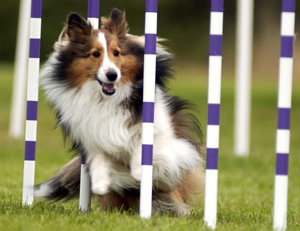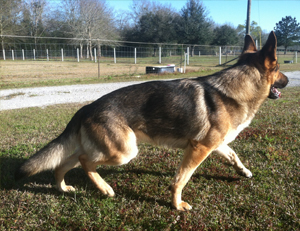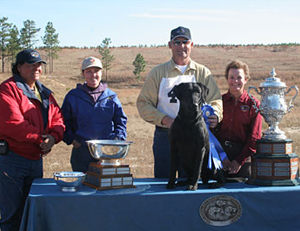 When human sports medicine doctors discuss conditioning and performance they usually delve into appropriate warm up and cool down exercises. There has been a good amount of research on the performance of the equine athlete, along with the human athlete, and we can extrapolate from their data what should be beneficial to our sport dogs. A canine conditioning program is a plan of directed exercise to improve the energy utilization of a body, and should be targeted to the specific endeavors of that individual.
When human sports medicine doctors discuss conditioning and performance they usually delve into appropriate warm up and cool down exercises. There has been a good amount of research on the performance of the equine athlete, along with the human athlete, and we can extrapolate from their data what should be beneficial to our sport dogs. A canine conditioning program is a plan of directed exercise to improve the energy utilization of a body, and should be targeted to the specific endeavors of that individual.
Throughout the non-racing dog sports, there is a lack of appreciation for the importance of dog conditioning. I hope to shed some light on this rather vague topic, so we can help our canine partners avoid injury and stress by being in better physical condition. Anything that decreases physical stress on an animal also relieves some mental/psychological stress; and learning is more difficult when an animal is under stress.
Is it better to warm up our dogs before they work? Why not pull them out of the truck and take them to the start for the protection routine? Let’s just explore…
 The goal of warm up in human athletics is to mildly increase the body temperature and increase blood flow to the muscles before hard work in order to increase performance and decrease the probability of injury.
The goal of warm up in human athletics is to mildly increase the body temperature and increase blood flow to the muscles before hard work in order to increase performance and decrease the probability of injury.
A general warm up is a few minutes of walking followed by a few minutes of trotting. Think of a linebacker jogging along the sidelines before he goes in. A specific warm up mimics the expected activity but at minimal or moderate effort.
Specific warm up causes the full range of motion of joints, and improves skill and coordination for the sport. Think of the baseball pitcher throwing before he enters the game. This specific warm up is most important in sports requiring accurate movements and precise timing – frisbee, agility, herding.
A proper warm up period prepares the body for activity without creating or approaching fatigue. The physiologic effects of a warm up are short-lived, so ideally the event should begin within ten minutes of the warm up for maximum benefit.
 The benefits are important. It takes more force to injure/tear a warm muscle than a cold one. Tendons and ligaments stretch more when warm, allowing a heavier load before failure.
The benefits are important. It takes more force to injure/tear a warm muscle than a cold one. Tendons and ligaments stretch more when warm, allowing a heavier load before failure.
Muscles that are warmed have dilated blood vessels and are therefore more saturated with blood. This enhances delivery of oxygen and nutrients to the hard working muscles as well as the removal of waste products.
Not only does saturated muscle have greater oxygen delivery, but the hemoglobin that carries the oxygen releases it more quickly resulting in a slower time to fatigue. Saturated muscles are more elastic and less susceptible to tearing. Warming up increases the speed of muscle contraction and relaxation, i.e., muscle strength and speed.
One interesting study showed that when men ran on a treadmill for less than a minute with an immediate EKG, 70% showed abnormalities consistent with abnormal blood supply to the heart. If they jogged 2 minutes before they ran, only 11% had these abnormalities. Might this be true for our dog partners? It would be logical to think so, but so far no such studies have been conducted. (I’ve sent this study report to some canine sports medicine friends at a university in hopes of encouraging the same type of study on a canine model. If they do it, I’ll report back!)
So, once we have warmed up our dog, and finished our work, do we pop him in the truck and go visit with our friends? Of course not! Time for cool down. We must not allow the blood flow to slow too quickly from its accelerated state. We need to rapidly wash out the metabolic waste products and help dissipate heat. Even a ten minute walk is of benefit, although total recovery may take hours depending on the intensity and duration of the work and allowing for individual variation in conditioning and ability. Cool down periods are also important for the cardiovascular system. An immediate cessation of exercise results in a decrease in blood return to the heart at a time when the heart’s demand for its own oxygen is still very high. Walk your dog around, preferably in the shade and repeatedly offer water. This is also the best time to stretch muscles: after work while muscles are still warm. A careful stretch of the limbs and neck after work can limit muscle soreness later.

Recent Comments